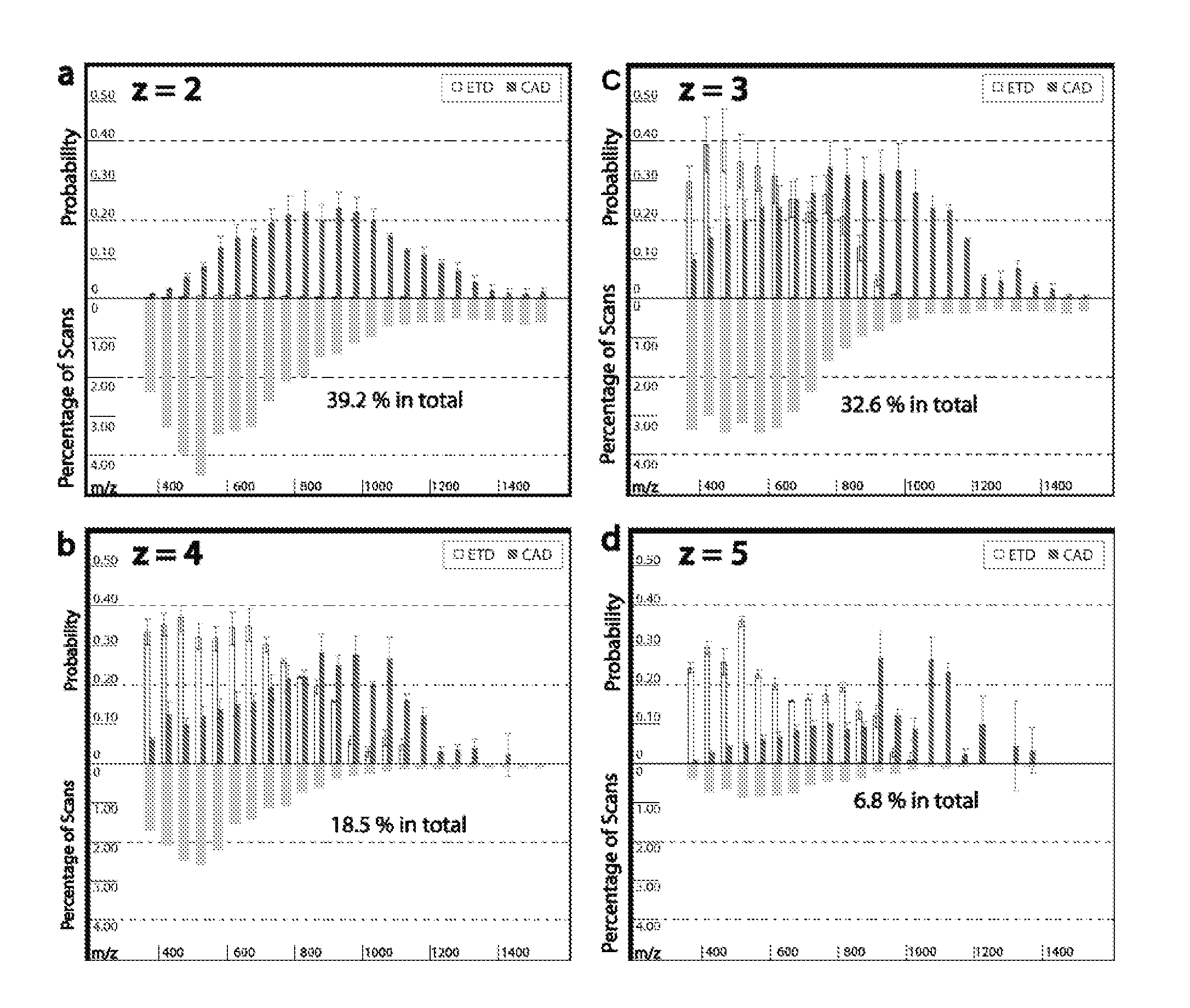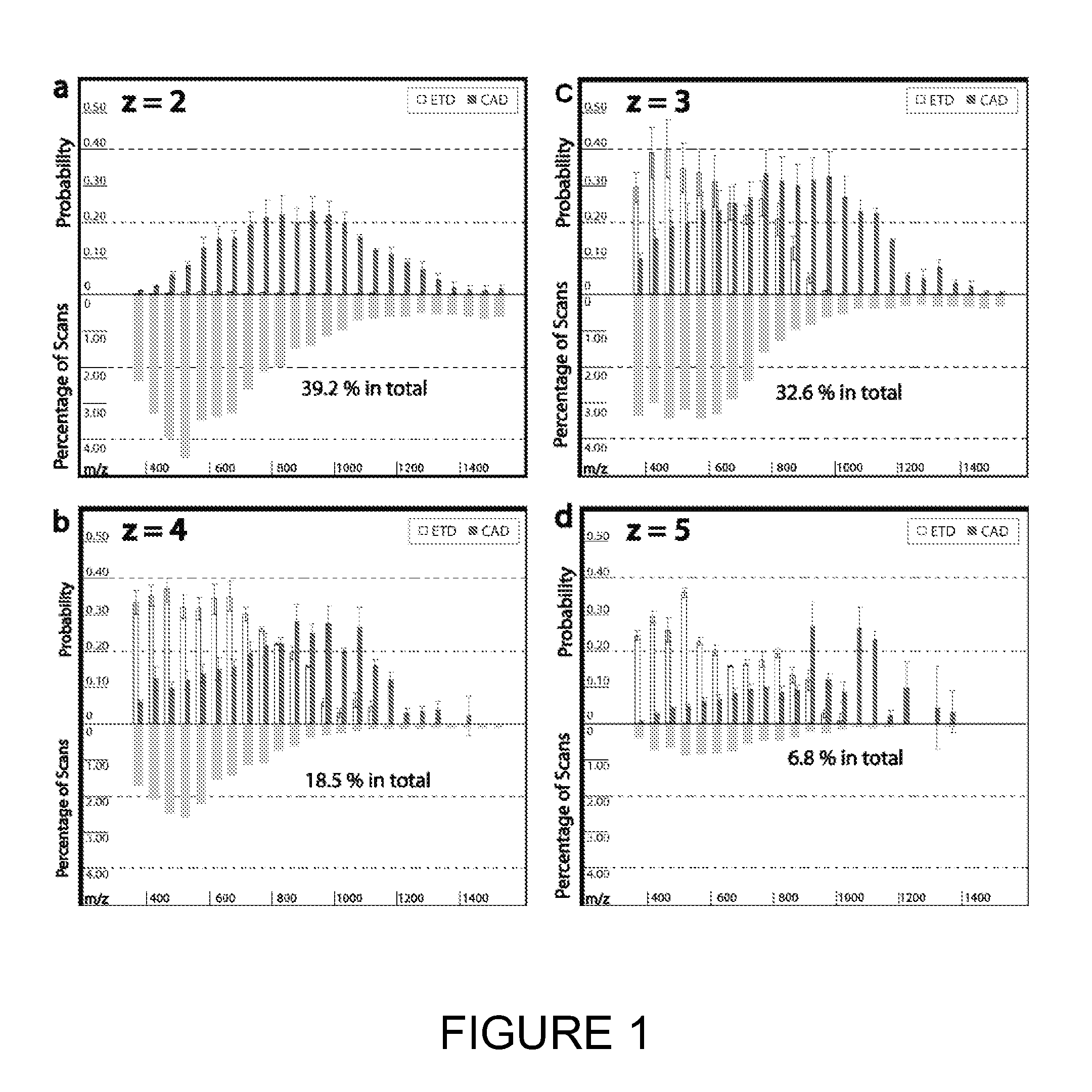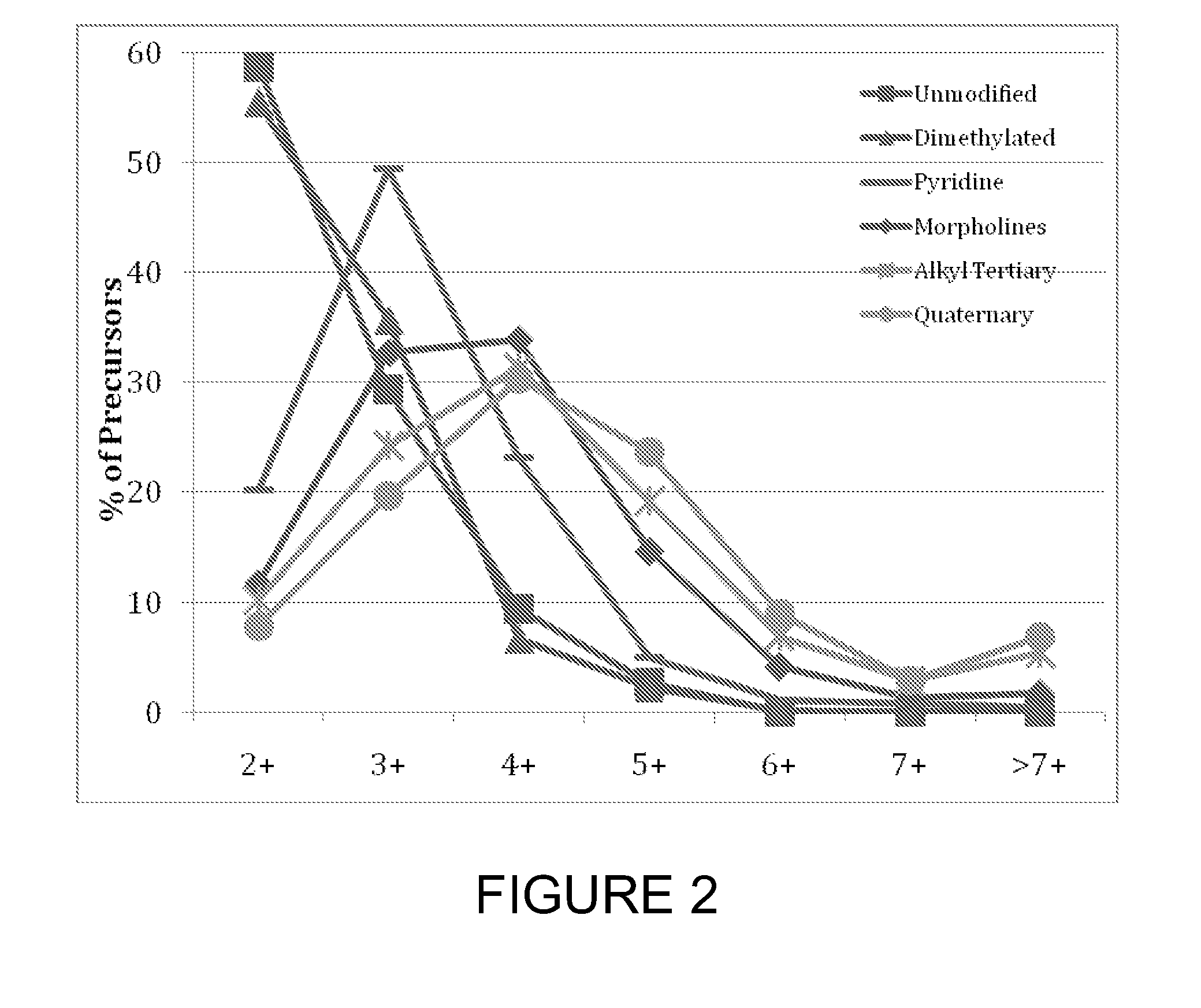Labeling peptides with tertiary amines and other basic functional groups for improved mass spectrometric analysis
- Summary
- Abstract
- Description
- Claims
- Application Information
AI Technical Summary
Benefits of technology
Problems solved by technology
Method used
Image
Examples
example 1
Tagging Reagent Labeling Efficiency
[0111]To determine labeling efficiency, the tagging reagents provided in Table 1 below were reacted with different peptides having between 10 and 13 amino acid residues and containing two to five carboxylic acid functional groups in the form of the C-terminus, and aspartic acid (D) and glutamic acid (E) residues. The tagging reagents included tertiary amines (such as C3 methyl Tert as C5 methyl Tert as labeled in Table 1), a pyridine (C2 pyridine) and a quaternary amine (C4 methyl Quat).
TABLE 1Structures of tagging reagents reacted with various peptidesC4 methyl Quat 4-(trimethylamine)butlylamine C5 isopropyl Tert N,N-diisopropyl-1,5- pentanediamine C3 methyl Tert 3-(dimethylamine)propylamine C3 morpholine 4-(3-aminopropyl)morpholine C5 methyl Tert 5-(dimethylamine)amylamine C2 morpholine 4-(2-aminoethyl)morpholine C4 ethyl Tert N,N-diethyl-1,4-butanediamine C2 pyridine 4-(2-aminoethyl)pyridine
TABLE 2Labeling efficiency# ofCOOH Groups(D and Eresid...
example 2
Charge State Distributions for Modified and Unmodified Peptides
[0114]Tagging peptides with quaternary amines has successfully increased the charge state of the peptide for mass spectroscopy. However, the resulting spectra from certain peptides were too complex and chaotic to yield useful identification information. It is believed tagging the peptides with tertiary amines and compounds having similar gas-phase basicity instead of quaternary amines will also result in an increased charge state but with clearer mass spectrometry results.
[0115]To test the effect of tagging peptides with different compounds, peptides from a BSA digest were methylated, left unmodified or tagged with a quaternary amine (C4 methyl Quat), alkyl tertiary amine (C3 methyl Tert, C5 methyl Tert, C4 ethyl Tert, or C5 isopropyl Tert), pyridine (C2 pyridine), or morpholine (C3 morpholine or C2 morpholine). FIG. 2 shows the distribution of charge states obtained for the various unmodified and modified peptides. Thes...
example 3
Charge States of Tagged Peptides from Yeast Lysates
[0119]In another experiment, peptides resulting from the digest of yeast lysates by trypsin were tagged with C4-cholamine (purified on a C18 column), C3tert amine (purified on a C18 column), C3tert amine (purified on a C18 column and by HILIC), or left unmodified. FIG. 3 shows the percentage of these peptides having particular charge states. As shown in FIG. 3, nearly 90% of unmodified peptides had a charge state of 3 or less, with approximately 60% of the unmodified peptides having a charge state of 2. In contrast, over 50% of peptides tagged with the quaternary amine or tertiary amines had a charge state greater than 3. Thus the tertiary amine tags were able to successfully increase the charge state of the peptides similar to the quaternary amine.
[0120]Digestion of the yeast lysate was performed after reduction with dithiothreitol and alkylation with iodoacetamide. Trypsin digestion proceeded for 18 hours at pH 8 in 1 M guanidine ...
PUM
| Property | Measurement | Unit |
|---|---|---|
| Fraction | aaaaa | aaaaa |
| Force | aaaaa | aaaaa |
| Basicity | aaaaa | aaaaa |
Abstract
Description
Claims
Application Information
 Login to View More
Login to View More - R&D
- Intellectual Property
- Life Sciences
- Materials
- Tech Scout
- Unparalleled Data Quality
- Higher Quality Content
- 60% Fewer Hallucinations
Browse by: Latest US Patents, China's latest patents, Technical Efficacy Thesaurus, Application Domain, Technology Topic, Popular Technical Reports.
© 2025 PatSnap. All rights reserved.Legal|Privacy policy|Modern Slavery Act Transparency Statement|Sitemap|About US| Contact US: help@patsnap.com



